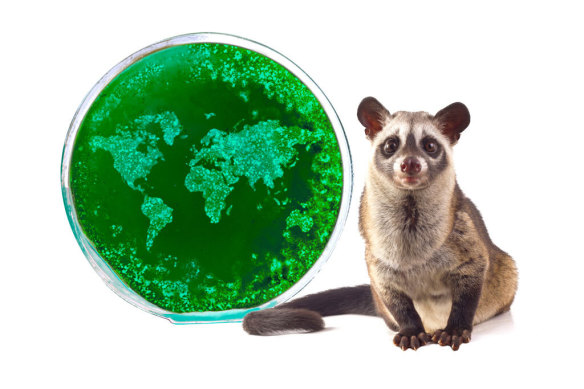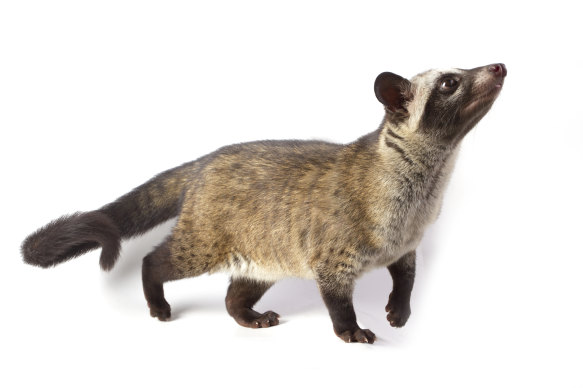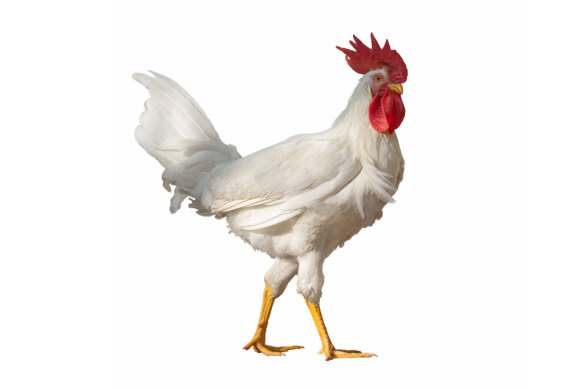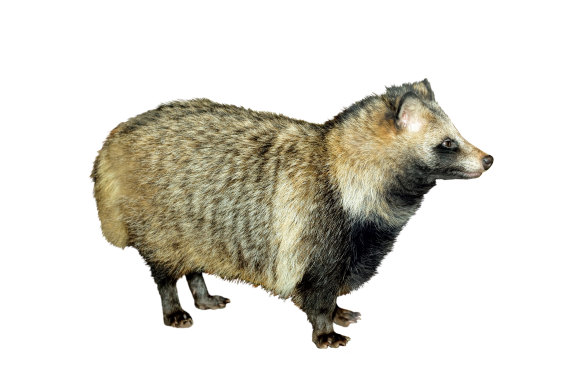Explainer
- Explainer
- Coronavirus pandemic
We’re now in the ‘age of pandemics’. Can we stop the next one?
What needs to happen to avert another virus-borne global tragedy? We ask the scientist who helped discover Ebola; a Nobel Laureate; and the man who first published COVID’s genetic code.
When the virus hunters landed in the remote African village of Yambuku in 1976, the nuns warned them to stay back. The sisters had cordoned off the area where they were caring for people dying from a mysterious new disease. In fact, the whole village was sealed off, both by thick jungle and now quarantine – the only plane allowed in was the one carrying this special team of international doctors suddenly at their door.
“Stay back or you’ll die!” the nuns yelled.
“It’s OK, we’re here to stop the epidemic,” a young microbiologist named Peter Piot shouted back.
Weeks earlier, blood from a nun who had fallen ill with the mystery disease had arrived at his lab in Belgium, Piot recalls, with a bloodstained note from a local doctor who wondered if the mosquito-borne yellow fever could be to blame. Only this seemed even worse. Whole families succumbed, racked by uncontrollable vomiting and diarrhoea, bleeding from the eyes and mouth. When Piot helped isolate the virus from the sample, he found something entirely new. “It was big [under the] electron microscope, and long like a worm,” he says. It was Ebola.
Piot and the team soon traced its spread to unsterilised needles and the highly infectious blood of its victims. Eventually, science tracked it further back to African fruit bats and grisly outbreaks among monkeys, chimps and gorillas. As more forest was logged, and animals and humans collided, Ebola would break out again and again. But tales of how Piot and his colleagues braved the microbe to contain that first human Ebola cluster would become an epidemiological legend. “That was really the beginning of outbreak investigation,” says Piot, now the director at the London School of Hygiene and Tropical Medicine.
Today, with the world in the grip of its biggest pandemic since the 1918 flu, Bill Gates has called for a crack team of specialists to be embedded in healthcare systems around the globe, ready to contain an outbreak, as Piot and his colleagues once did. Others say we should reduce the risk of pandemics where they emerge – at the edge of the wild – by curbing logging and the wildlife trade from which both SARS and likely COVID arose.
They also say pandemics are more likely than ever. But why? And what are the best ways to stop the next one?

Credit:
Where do pandemics come from?
We live on a virus planet, says Piot. There are more on Earth than stars in the sky. Fortunately, most of them can’t infect us. The few that can are mostly caught from animals – in that knife-edge moment of chance known as a “spillover” when a pathogen circulating in one species leaps to another. Some animals, such as bats, have evolved for thousands of years alongside their viruses. But as different species interact, the viruses that have grown up with one host have a chance to jump to another.
Most will fizzle out just as suddenly, but sometimes a virus will mutate into something new, even into something that can infect humans. Everything from Ebola and HIV to yellow fever, flu, and SARS began this way. “And humans can give their viruses to animals too,” says evolutionary virologist Professor Eddie Holmes, pointing to outbreaks among farmed pigs. “We’re not the end of the chain by any means.”
The wet market in Wuhan where COVID first emerged in late 2019 was the perfect place for such a spillover – and multiple studies of both the initial outbreak and COVID’s viral ancestry consistently point to it as the most likely origin of the pandemic. Holmes had been to that very market in Wuhan only five years earlier. In the south-western corner, where the fare on offer was often illegal wildlife, he’d photographed a fluffy raccoon dog (a species linked to the SARS outbreak along with civets at a wet market 20 years before).
Such wet markets are still popular throughout Asia, says Nobel-Prize-winning immunologist Professor Peter Doherty – part of an enduring preference for fresh meat over frozen.They are also notorious melting pots of disease, as stressed animals from all corners of the world are caged close together, trading unfamiliar germs, and then handled and butchered by humans. “We worry about it all the time with bird flu too,” says Doherty. “You get wild birds coming into market alongside poultry.”
Not all viruses are primed to go global, of course. “I don’t really worry about an Ebola pandemic because you need close contact [to spread it],” says Piot. “Though we have seen terrible outbreaks like in West Africa in 2014 when 11,000 died.” His eye is still firmly on influenza, which mutates fast and spreads easily. “We haven’t really had flu seasons for the past two winters [during the pandemic]. That means we’re not protected. Something could emerge and rip through.”

Palm civets, an ancient mammal eaten as a delicacy throughout Asia, were linked to the SARS outbreak at a wet market in China in 2002.Credit: Getty Images
Why do scientists say we’ve entered the age of pandemics?
Disease has always stalked humanity but, while strange outbreaks of our hunter-gatherer past tended to burn out quickly, pandemics emerged with the rise of cities. “With the great age of exploration, agriculture, the slave trade, we saw pathogens moving around more and more,” says Holmes. “By the time of COVID, we had megacities, global travel, deforestation, live animal markets. All of this is just fuelling the fire of disease emergence.”
It took the Black Death almost five years to encircle Europe in the Middle Ages. Today, a virus in a traveller can fly from Wuhan to London in hours. “That’s why when these things break out we need to ground the planes,” Doherty says. “It goes around the world in people, not bats. There need to be global agreements. Australia kept [COVID] cases low for so long by closing the border.”
Deforestation is also a major driver. A 2017 study linked 25 of the world’s then 27 Ebola outbreaks to logging. In Bangladesh, bats that carry the deadly Nipah virus are increasingly roosting in bustling cities and villages because their forest habitat has been almost entirely cleared. When yellow fever swept into Brazil in 2017 and surrounded the city of São Paulo, it came from the edges of the jungle, near logging and farming. “It was like the city was under siege,” says Holmes.
And the risk of spillovers is accelerating. Not only are we eating through the wild at faster rates and trading more animals, but climate change is further forcing more species to compete for shrinking habitats. “More animals will be in contact, so more viruses are going to jump,” says Piot.
Meanwhile, mosquitoes will find their habitat expanding as the planet warms – and that means the viruses they carry will spread further north and south. Take the recent emergence of the rare Japanese encephalitis beyond Australia’s northern tip for the first time, for example. Pandemics, along with monster storms, fire seasons and heatwaves, are another symptom of climate change, Holmes says. “It’s not rocket science. It’s about our narrowing proximity with the animal world as we encroach on it.”

Bats are essential pollinators and carry many stable viruses that do not make them sick but can mutate if they leap to other species.Credit: Joe Armao
How can we reduce the risk?
When it comes to pandemics, as well as many environmental ills, there is a case for saving nature to save ourselves. As Piot explains, the concept, known in public health circles as One Health, links humans back into the ecosystems we rely on.
In February, a major study found that for a price tag of about $20 billion a year, the world could halve deforestation in hotspots of emerging disease, “drastically” restrict and regulate the wildlife trade and ramp up disease surveillance and prevention in farmed animals – the three big priorities of virus trackers such as Holmes. That cost is only one-tenth of the economic productivity already erased every year by zoonotic diseases (animals to humans or vice versa), which claim about 3 million lives on average annually outside a pandemic. “And it’s much less again than the trillions spent on a disaster like COVID,” says Holmes.
Most countries have already committed to ending deforestation by 2030 as part of their net-zero carbon emissions pledges in the race to limit the fall-out of global warming – that includes Australia along with key nations Brazil, Indonesia, the US and China. While demand for farming and rainforest products (such as the palm oil in our potato chips and ice-cream) continues to boom, some countries have already made a start, often by incentivising landowners to keep forests and protecting national parks and Indigenous lands.
Brazil, the key heartland for the world’s essential Amazon rainforest, slashed its deforestation by more than 70 per cent in the decade up to 2014 without losing agricultural productivity (although progress was later reversed under the presidency of Jair Bolsonaro). Holmes says forests are a crucial investment on multiple fronts. “Bats aren’t going to bother hanging out in Centennial Park [in Sydney] if they have their own habitat back,” he says. “We need to give [wildlife] space to breathe.” Think of it as social distancing.
Some countries have already made a start, often by incentivising landowners to keep forests, and protecting national parks and Indigenous lands.
When SARS and then COVID emerged, global calls to ban wet markets and crack down on the wildlife trade also ramped up, including from the Australian government and the World Health Organisation. Vietnam and China banned the trade, although China later backflipped on some key restrictions. Now many experts worry it has dropped off the global agenda altogether. “We’ve seen great funding come in for vaccines and antivirals,” says Holmes. “But where we haven’t had the focus is in the fundamentals.”
Wildlife trafficking is pushing many species into extinction, and even the legal trade accounts for more than a billion interactions between humans and wildlife annually. Outright banning it could disenfranchise many communities who rely on bush meat for food, especially in Africa, and push more of it underground. But experts say it can be scaled back, particularly in parts of Asia where demand is fuelled by the growing middle class and traditional Chinese medicine. In China, wild meat is typically more expensive than livestock, and products such as endangered rhino horn or tiger bone, sold as everything from unproven aphrodisiacs to hangover cures, have become about status as much as tradition. “We’ve known these markets pose a risk for ages but now more [consumers] are wealthy and travelling around the world,” says Doherty.
Some wildlife advocates hope the tragedy of COVID will inflame a growing cultural stigma against wild meat and products – on par with the North American conservation movement to save the bison at the turn of the 20th century that saw a wildlife agency regulating hunting in every US state by the 1930s. Others point to strides made in reducing ivory hauls, since China finally banned the product from endangered elephants in 2017, as a sign that targeted bans could work, especially under Beijing’s authoritarian government. But breaking the trade’s hold, both in Asia and beyond, will not be easy with so much money and so many jobs still tied up in the market.
Improving conditions for animals, including foxes, mink and other animals farmed for fur, could help curtail outbreaks in overcrowded breeding centres and markets in the meantime. While the live wildlife sold at the Wuhan market had been cleared out by the time investigators descended on January 1, 2020, Holmes and colleagues later sampled many of the facilities that fed its trade and found them “crawling with [other] viruses”. “It was unbelievable, all these raccoon dogs and civets. You could clean up [the global trade] and it wouldn’t be that expensive, it’s doable,” he says. “The problem is the politics. It could be seen as the West just sweeping in.”
Surveillance is generally better in livestock, particularly in the developed world, though the disease risk is still big, Doherty says. An invisible line separating Asia and Australia, beyond which migratory birds are reluctant to cross, is often said to protect Australian chickens from avian flu, for example. But this year scientists have picked up a particularly deadly strain of influenza spreading in poultry and wild birds across North America, Europe, Asia and Africa.

Scientists are often on guard for bird flu to spread from wild birds to farmed chickens.Credit:
How can we improve surveillance?
The epidemiologist who helped eradicate smallpox, Dr Larry Brilliant, has said “outbreaks are inevitable but pandemics are optional” and Piot agrees. Catching them early is what makes the difference. While you could argue COVID broke out in one of the worst places for containment – in the large, international city of Wuhan on the cusp of Chinese New Year festivities – Holmes notes that Chinese authorities also sat on information about the new virus early on as they tried to quiet the panic online that “SARS was back”. “The Wuhan doctors did a great job spotting the pneumonia cases to start with,” he says. “But every country needs to get better at sharing data, testing, right away. Often the natural inclination is to say nothing.”
He and a colleague in China felt the pinch of this in the first days of 2020 when the paper they’d written after sequencing an early COVID genome sat on ice under a Chinese government embargo. Within days, Holmes would defy that order and release the virus’s genetic code publicly anyway, essentially firing the starting gun for vaccine and treatment research around the world. “My colleague sent it to me [in Australia], and I think I had it 52 minutes before it was live.” (China also published the sequence that week.)
A recent revolution in genomic sequencing of this kind means scientists have been now sharing more data than ever during COVID, tracking the virus’s family tree across the globe in real-time and watching for new variants. When Holmes was researching HIV in the early 90s, he says sampling even a fragment of the virus would take weeks. “Now with COVID, we have the technology to do the whole genome in less than a day. It’s changed the rule book.”
But, though some capacity has already been building up in Africa after Ebola, HIV and now COVID outbreaks, Holmes, Doherty and Piot agree with Bill Gates that more resources need to go into viral surveillance worldwide. The low-tech site ProMED has long been used by doctors to report disease and proved critical in releasing the first signs of COVID but “it’s run on fumes,” says Holmes. A new WHO hub in Berlin pulling together global “epidemic intelligence” data has since been created but is yet to get fully up and running.
Meanwhile, for about one billion dollars a year, Gates says the world could fund a WHO-led containment team of a few thousand standing by around the world - with an international mandate to swing onto outbreaks fast. He’s even suggested a name: GERM (short for Global Epidemic Response and Mobilization).
As for finding the next big virus before it breaks loose, some argue for trekking into remote jungles and bat caves to sample viruses circulating in animals. Others want more screening for strange illnesses in people. But Holmes thinks we should start the search on the frontline: where animals and humans most often collide. That means farms, wet markets, even vet clinics and wildlife shelters.

Racoon dogs sold at wet markets in China carried a virus linked to the SARS outbreak.Credit: Getty Images
How can we make pandemics less deadly?
Compared to the previous time a pandemic upended life more than a century ago, the world has had a key advantage during COVID: modern medicine produced safe and effective vaccines within a year. Doherty and other experts, including Bill Gates who has long funded vaccine and pandemic research, want that rush of innovation channelled into developing a global stockpile of broad-spectrum antivirals and vaccines. “We need them for coronaviruses, influenza, Hendra and Nipah viruses,” says Doherty. “And they need to be ready, all agreed, whenever something like this emerges, so everyone has access.”
Before COVID, Piot says, India was largely “the pharmacy of the world”, a logistical powerhouse for vaccine production, but COVID has shown those supply chains must be expanded. The European Union, to which Piot is a special COVID adviser, has already pledged $1 billion to help set up manufacturing in Africa, for example, and countries such as Australia are investing in new mRNA technologies. “When India was hit by their big Delta wave, they stopped exporting [vaccine for a time],” says Piot, whose home country of Belgium is the world’s third-biggest pharmaceutical producer, and a key maker of mRNA vaccines. “So sometimes smaller countries like mine are good for this because what are we going to do with all that vaccine but export it? Still, we need regional hubs everywhere.”
Just as it has for thousands of years, pulling up the drawbridge – closing our borders to countries with outbreaks – will likely help guard against future pathogens too.
Doherty says we could be more proactive in our urban design too. When doctor Jon Snow discovered contaminated water was fuelling cholera outbreaks in the 19th century, most countries overhauled their sanitation – and experts say we need to overhaul ventilation in buildings, in the same way, to guard against airborne disease. But epidemiologist Professor Mike Toole says in Australia only Victoria, after disastrous outbreaks in its hotel quarantine program, has invested big in ventilation, including in schools.
At the very least, COVID has shown that improving healthcare, often chronically underfunded even in the developed world, will not just save lives but money, Doherty adds, and help shrink the gap between rich and poor countries. Gates also argues that “it will save money, in the long run, like an insurance policy. We need to spend billions in order to save trillions. ”
And, just as it has for thousands of years, pulling up the drawbridge – closing our borders to countries with outbreaks – will likely help guard against future pathogens too, as it helped Australia weather the first waves of both COVID and the 1918 flu before it. So Doherty says better plans need to be in place to limit the economic and social fallout.
Of course, getting governments to agree to any of this is another story altogether, Piot sighs. Health officials around the world have been meeting to discuss a new pandemic treaty, slated for 2024, as part of a push to give back more power to the WHO and hold countries to account for their pandemic responses. But already, false conspiracy theories that such an agreement would override national sovereignty have set back progress. “Viruses don’t respect borders,” says Piot. “We need better international co-operation.”
As Holmes also points out, often “the barrier is not the science, the barrier is the politics. And when this crisis has passed, will they really act? They were warned before COVID a pandemic was coming too.”
There is one lesson, though, that Piot says the world has surely learned. “We know now we’re not immune. Even in our built-up, digital, 21st-century life, an old-fashioned stupid virus, can come along and turn it upside down. Next time, we’ve got to be ready.”
Let us explain
If you'd like some expert background on an issue or a news event, drop us a line at explainers@smh.com.au or explainers@theage.com.au. Read more explainers here.